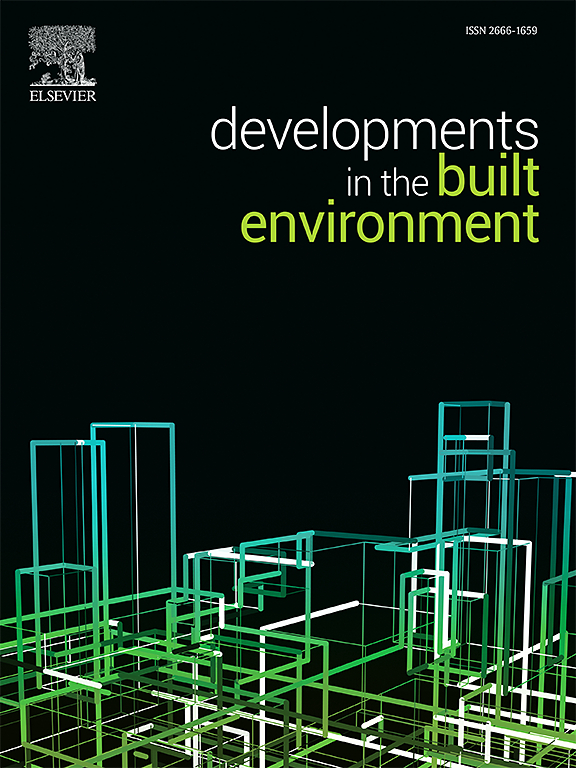用石墨烯量子点(GQDs)增强再生骨料混凝土:提炼建筑拆除和停用铁路枕木产生的废物
IF 8.2
2区 工程技术
Q1 CONSTRUCTION & BUILDING TECHNOLOGY
引用次数: 0
摘要
建筑及拆卸废物的处置对环境构成挑战,而将建筑及拆卸废物循环再造为混凝土的粗骨料,有助节约自然资源。然而,由于残留物、孔隙度增加和钙矾石的潜在形成,这通常会降低强度和耐久性。最近的研究表明,石墨烯量子点(GQDs)具有增强水泥复合材料性能的潜力,特别是通过提高强度和耐久性。本研究探讨了使用废旧铁路枕木回收粗骨料和拆解铁路枕木,结合GQDs来提高混凝土性能。此类调查从未在其他地方进行过深入研究。测试了18种含有25 - 100%再生骨料的混凝土混合料,含和不含0.3% GQDs(按水泥重量计)。机械性能(抗压和抗折强度)和耐久性(吸水率,氯渗透)进行了评估。微观结构分析通过FESEM和EDS评估混凝土的行为。我们的新发现表明,使用随机来源的再生骨料会导致抗压强度和抗折强度分别降低21.7%和18.2%,这主要是由于孔隙度和钙矾石形成的增加。然而,GQDs的加入通过促进水合硅酸钙(C-S-H)凝胶的形成,将压缩和弯曲强度提高了约15%。含有废旧铁路枕木回收骨料的混凝土抗压强度降低幅度较小,高达11%。抗弯强度的降低也较低,达到7%。微观结构分析表明,GQDs促进了结晶沉淀的形成,从而提高了混凝土的强度和耐久性。总的来说,我们的新见解表明,将GQDs与再生骨料结合到混凝土中不仅有助于节约环境资源,而且还提高了材料的整体性能。本文章由计算机程序翻译,如有差异,请以英文原文为准。
Enhancing recycled aggregate concrete with graphene quantum dots (GQDs): Refining wastes from construction demolitions and out-of-service railway sleepers
The disposal of construction and demolition waste (CDW) poses environmental challenges, whilst recycling CDW as coarse aggregate in concrete can help conserve natural resources. However, this often reduces strength and durability due to residues, increased porosity and the potential formation of ettringite. Recent studies have demonstrated the potential of Graphene Quantum Dots (GQDs) to enhance the performance of cement composites, particularly by improving strength and durability. This study examines the use of recycled coarse aggregates from CDW and dismantled railway sleepers, combined with GQDs, to enhance concrete performance. Never have such the investigations been delved into before elsewhere. Eighteen concrete mixes with 25–100 % recycled aggregates were tested, with and without 0.3 % GQDs (by weight of cement). Mechanical properties (compressive and flexural strength) and durability (water absorption, chloride penetration) were evaluated. Microstructural analysis via FESEM and EDS assessed concrete behaviour. Our new findings reveal that using recycled aggregates from random sources led to a reduction in both compressive and flexural strengths by 21.7 % and 18.2 % respectively, primarily due to increased porosity and ettringite formation. However, the addition of GQDs improved both compressive and flexural strengths by about 15 % by promoting the formation of calcium silicate hydrate (C-S-H) gel. Concrete incorporating recycled aggregates from used railway sleepers exhibited a smaller reduction in compressive strength, up to 11 %. The reduction in flexural strength was also lower, reaching up to 7 %. Microstructural analysis revealed that GQDs facilitated the formation of crystalline precipitates, thereby enhancing both the strength and durability of the concrete. Overall, our new insights suggest that incorporating GQDs into concrete with recycled aggregates not only helps conserve environmental resources but also enhances overall material performance.
求助全文
通过发布文献求助,成功后即可免费获取论文全文。
去求助
来源期刊

Developments in the Built Environment
Multiple-
CiteScore
7.40
自引率
1.20%
发文量
31
审稿时长
22 days
期刊介绍:
Developments in the Built Environment (DIBE) is a recently established peer-reviewed gold open access journal, ensuring that all accepted articles are permanently and freely accessible. Focused on civil engineering and the built environment, DIBE publishes original papers and short communications. Encompassing topics such as construction materials and building sustainability, the journal adopts a holistic approach with the aim of benefiting the community.
 求助内容:
求助内容: 应助结果提醒方式:
应助结果提醒方式:


